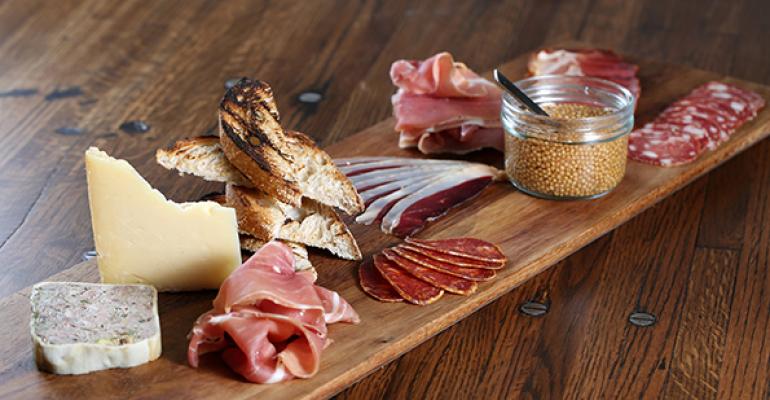Tableware trends follow lifestyle influences and fashion trends. Just as fashions have become more relaxed and casual, so too have restaurant tablesettings. We’ve moved away from the formal placesettings so prevalent a few decades ago, with their showplates, crested logo dinnerware and de rigueur white tablecloths— although some consumers still express a fondness for the latter.
Local sourcing and farm-to-table menus also have opened the door to more customized, casual dinnerware designs in restaurants. For example, chef Dave Becker at Sweet Basil in Needham, MA, expanded the definition of locally sourced when he began making his own plates and serving dishes for the restaurant. Other newly opened restaurants are featuring image-making dinnerware that underscore the cuisine. For example, Saltwood in Loews Atlanta Hotel offers rustic presentations, including wood blocks that emphasize the restaurant’s salted, cured meats and charcuterie plates.
Restaurant Hospitality recently asked Amy Stavis, the editor/publisher of Tableware Today, to share some of the trends she sees in the tableware industry. As for her own preference in restaurant dinnerware, she says, “I like restaurantware that is not the same old, same old—something that makes me do a double take, whether that’s through color, shape or texture. I like something that stands out, that starts the sensory experience before any food comes to the table.” Tableware can influence consumer perception in a variety of ways.
Stavis adds that consumer tableware isn’t as trendy as the foodservice world when it comes to accessory pieces. “Restaurants tend to get there first.” Right now, she says, mortar-and-pestle sets and cruets are popular.
Here are more of her observations about trends in tabletop design today.
• Casual: “Casual tableware has been, and will continue to be, a trend.” Tablesetting trends reflect the fact that more chefs are exploring high-quality food in casual dining formats. Consider ‘wichcraft in NYC (Tom Colicchio), Funky Chicken in Houston (Bradley Ogden), and the newly opened vegetable-centric fast casual spot, Beefsteak, in Washington, DC (José Andrés).
• White: “Whiteware remains extremely popular.” Chefs gravitate toward the blank canvas of white dinnerware that highlights the food. Popular styles and shapes may evolve, but white still looks right.
• Retro: When it comes to retro influences, Stavis says, “Fiesta remains a popular supplier, and each new color launched is greeted with fanfare. Diner-type ware and clunky stemware are trending.”
• Designer: “Name designers continue to be strong influencers in tableware,” she says. “These include names from the fashion world, such as Kate Spade and Vera Wang. Chefs’ names such as Gordon Ramsay and Rachael Ray continue to be strong sellers.”
Contact Gail Bellamy at [email protected].





